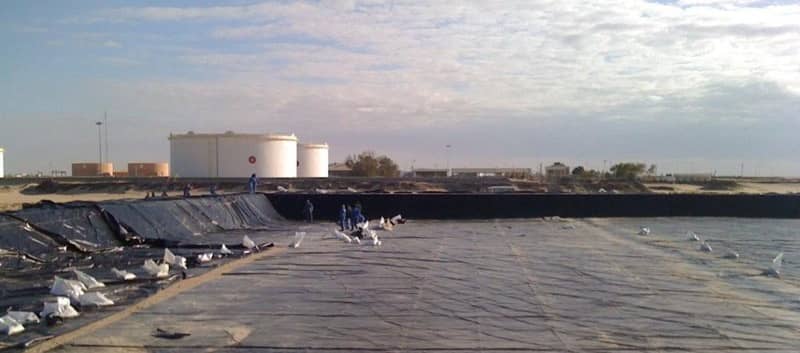 Determining and choosing the best geomembrane for your project can be a time consuming process. There are a number of factors engineers must consider, besides overall price, in order to provide clients with the best solution. In order to assist you with your specifications, we’ve written comparisons for a few geomembranes. Below, you will find a comparison of EIA and HDPE.
Determining and choosing the best geomembrane for your project can be a time consuming process. There are a number of factors engineers must consider, besides overall price, in order to provide clients with the best solution. In order to assist you with your specifications, we’ve written comparisons for a few geomembranes. Below, you will find a comparison of EIA and HDPE.
Consistent Performance & Strength
A failure in a geomembrane can result in serious damage to the surrounding environment and ecosystem. With that in mind, it is vital to specify a material that performs consistently in the geographical area of the installation.
HDPE performance is dependent on a number of variables including formulations, processing, quality assurance monitoring, and installation procedures. The variability makes it difficult to understand the long-term performance capabilities of the material, with experts suggesting continuous monitoring of the project until the project exceeds its useful life. EIA, on the other hand, has proven field performance since 1976.
Thicker Is Not Always Better
HDPE derives much of its strength from the overall thickness of the material. EIA is a synthetic reinforced geomembrane which provides high strength from the polyester base fabric at minimum thickness. 30 mil EIA has a puncture resistance of 868 pounds, whereas HDPE can only withstand anywhere from 275 – 553 pounds depending on thickness.1
Resistance to Thermal Expansion & Contraction
The effects of thermal expansion continue to plague HDPE. While lower molecular weight resins are being used to mitigate issues, HDPE still has a higher Coefficient of Linear Thermal Expansion. HDPE is therefore not ideal for exposed applications as the higher susceptibility to thermal expansion increases the problem of environmental stress cracking (ESC) near seam locations. ESC will not stop until the crack(s) reaches the edge of the geomembrane, resulting in total failure.
EIA is engineered to be more dimensionally stable due to low thermal expansion properties, eliminating the extreme contraction and expansion seen in HDPE. For every 100 ft., EIA will expand less than one inch, while HDPE can expand to almost 18 inches. EIA can also become creased without having to fear ESC.
Repairability
HDPE projects tend to experience damage due to poor installations. Installation crews, when installing improperly, will use the sun to warm the geomembrane before stretching in full. This causes the liner to weaken. It is important to note that UV induced oxidation is a long-term process and not a scenario that happens immediately during construction.
The welding process can also contribute to the weakening of the geomembrane as some of the antioxidants added to the HDPE are ‘cooked off’. As a result, HDPE is more susceptible to oxidation at the weld points over time than EIA. Once weakened, HDPE can be further damaged by rocks, chemicals, construction equipment, etc., making repairability crucial.
EIA utilizes a heavy base fabric that provides superior puncture resistance. In the event of a tear, only minor repair is required. This can be done by a maintenance group with a hot air repair kit.
The use of the right material for the right application is crucial for engineers. Stay tuned for Part Two of the blog to learn more about how certain geomembranes stake up against their competition.
What other factors do you look at when specifying a geomembrane? Tell us about it in the comments.
1 results from Seaman Corporation Test Request #0536




